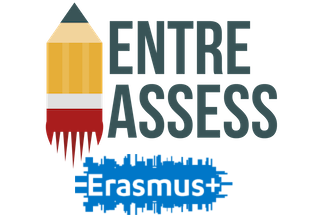 What it is: Five habits of creativity (see here and here) is a tool to carry out formative assessments of student creativity in school. It presents a five-dimensional definition of creativity:
What it is: Five habits of creativity (see here and here) is a tool to carry out formative assessments of student creativity in school. It presents a five-dimensional definition of creativity:
- Complex and multifaceted, occurs in all domains of life;
- Learnable;
- Important to be successful in life;
- Analysable as personal dispositions;
- Influenced by context and social factors.
How it works: The tool focuses on five dispositions of creativity (each with three sub-dispositions) called “habits”:
- Inquisitive;
- Persistent;
- Imaginative;
- Collaborative;
- Disciplined.
The tool is “a paper-tool” designed to track the development of each of the 15 sub-dispositions along three dimensions – strength, breadth and depth: Strength is seen in the level of independence demonstrated by pupils in terms of their need for teacher prompts or scaffolding, or their need for favourable conditions; Breadth is seen in the tendency of pupils to exercise creative dispositions in new contexts, or in a new domain; and Depth is seen in the level of sophistication of disposition application and the extent to which application of dispositions is appropriate to the occasion.
Each student’s profile is mapped regularly by assessing the sub-dispositions of the five habits and recording achievement, citing concrete behaviours and, describing the depth, breath and strength according to the teacher´s observations. The tool is presented to the students in connection to aims, content of learning and vocabulary. Students assess their progress on sheets with exemplar statements describing each sub-disposition, showing how he/she is developing. It has been found that focusing on one habit at a time can be useful.
Benefits: The tool acts as a prompt to teachers to maintain focus and as a formative assessment tool to track pupil creativity. The two main benefits of assessing progress in the development of creativity were identified as: 1) teachers can be more precise and confident in developing young people’s creativity; and 2) learners gain an understanding of what it is to be creative (and how to use this understanding to record evidence of their progress). This leads to a greater likelihood that learners can display the full range of their creative dispositions in a wide variety of contexts.
Challenges: Formative assessment has a view of reality that sees reality as socially constructed rather than objective and thus variables assessed formatively are complex, interwoven and difficult to measure. From a teacher’s perspective this tool seems to be time consuming, as many formative assessment tools tend to be.
Relevance for entrepreneurial teaching: The relevance of the five habits of creativity tool lies in: Clarifying and understanding learning intentions and criteria for success;
Engineering effective classroom discussions, questions and tasks that elicit evidence of learning;
Providing feedback that moves learners forward;
Activating students as instructional resources for each other; and Activating students as owners of their own learning.
Applied assessment methods:
- Assessment for learning,
- Possibilities for using as Assessment of learning,
- Self-assessment.
Examples from practice: A list of the schools (different school levels) is provided in the 2012 report and both reports describe to some extent the experience of their use of the tool.


